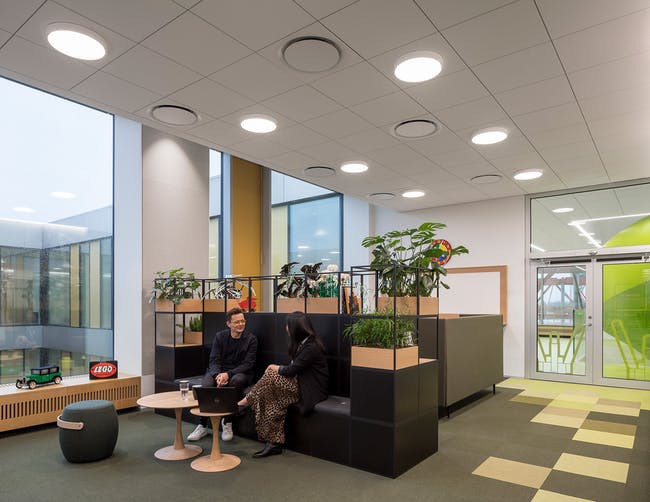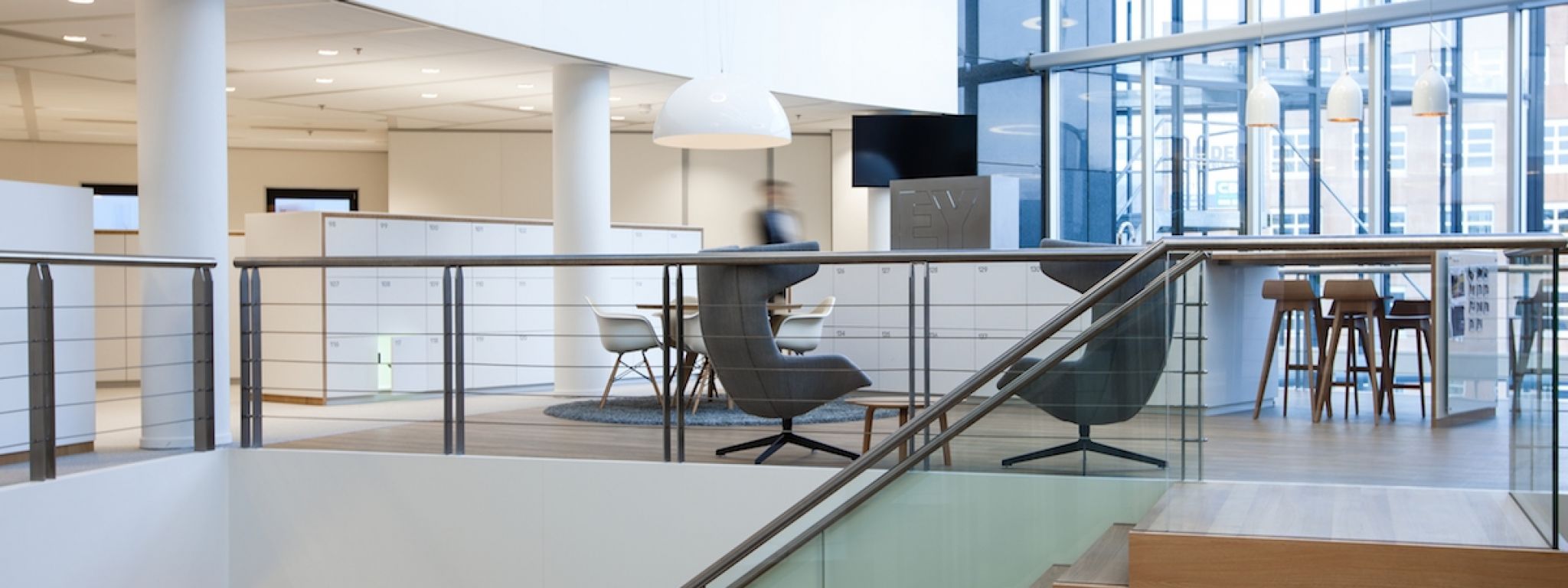Are traditional office lockers slowing down your workplace's productivity? As flexible working becomes the norm and fixed desks are on the decline, it’s time to rethink employee storage solutions. Traditional lockers, which rely on keys or PIN codes, are no longer practical. Instead, Smart Lockers are becoming a game-changer in modern work environments. This article explores the key advantages of smart lockers and why they are becoming indispensable in today’s dynamic workplaces.
As the nature of work continues to evolve, so too do the needs of the workplace. Employees no longer work in fixed desks or rely on conventional office setups. With remote and hybrid work models on the rise, companies are recognizing the importance of flexibility in all aspects of office management — including storage solutions.
Traditional lockers, while functional, do not cater to the demands of modern workflows. Employees require quick, secure, and convenient storage options that are flexible and adaptable to their dynamic work routines. Smart Lockers offer just that, bringing innovation to office spaces and unlocking new levels of efficiency.
This article explores six key advantages of smart workplace lockers compared to traditional lockers and highlights why dynamic, modern workplaces are increasingly opting for this innovative solution.
1. Less floor space required
Traditional office lockers are typically assigned to individual employees, each requiring a key or PIN code for access. This results in the need for a separate locker for every person, and often additional lockers for visitors or company assets. The limited verification methods also mean employees might end up occupying more than one locker, leading to an overabundance of unused lockers.
This inefficiency is becoming more noticeable with the rise of flexible working, where more lockers sit empty each day, while companies still maintain a large number of them.
With Smart Lockers, the situation is different. These lockers require up to 40% less floor space. By offering lockers as a flexible, on-demand service, smart locker systems can accommodate more employees and storage needs with fewer lockers.
Employees can open, release and switch lockers themselves, using an access card, smartphone, their fingerprint or facial recognition. Customized programming ensures lockers are assigned for specific time slots or users, and once an employee finishes, the locker is automatically made available for someone else.
The lockers are released after the work is done, making them available again to others. This way, a smaller number of lockers can accommodate more employees and storage needs.
By reducing the number of lockers needed and making use of space more efficient, Smart Lockers significantly streamline workplace storage, reducing unnecessary clutter and increasing overall productivity. Moreover, these systems are easier to manage, saving time and effort in facilities management.
Read more: What is a Smart Locker?

2. Time-saving for the Facilities Team
Managing traditional lockers can be a time-consuming task for the facilities team. The process often involves manual work, such as checking logs to determine which lockers are available before assigning them. Lost keys, forgotten PIN codes, and requests for locker changes are common, creating ongoing challenges for both employees and the facilities team.
Automated processes
Smart Lockers streamline this process by automating many tasks, significantly reducing the workload for facilities staff. These systems automatically handle locker assignments, track usage, and collect valuable data on locker activity. The automation not only minimizes the time spent on manual management but also enhances overall operations.
Lockers as an on-demand service
Smart Lockers transform traditional office lockers into a flexible, on-demand service. Employees can independently select and use a locker as needed, without relying on the facilities team. The locker management software automatically enforces pre-set rules regarding locker usage. For example, if the policy restricts employees to one locker at a time, any request for a second locker is automatically denied, ensuring smooth operations.

3. User Convenience
For employees, convenience is the top priority when it comes to storage solutions. These digital lockers offer two major advantages over traditional lockers that cater directly to these needs: eliminating the hassle of lost keys or forgotten PIN codes, and offering on-demand storage whenever and wherever it’s needed.
Fast and easy access to storage
Unlike traditional lockers, which require manual assignment and often involve keys or PIN codes, Smart Lockers provide seamless, on-demand access. Employees don’t have to worry about carrying extra keys or remembering PIN codes. Instead, these lockers are activated using familiar access methods - such as RFID access cards, smartphones, fingerprints, or facial recognition - making the process much quicker and more user-friendly.
A customized user experience
The flexibility of Smart Lockers goes beyond just access. They can be customized to suit specific workplace needs, from team storage and parcel services to end-of-trip facilities. This flexibility ensures that employees and teams can use lockers in a way that best suits their tasks, improving both convenience and efficiency.
The Smart locker system can be customized to suit various needs, such as assigning lockers at convenient heights for employees with disabilities or built-in USB chargers allow employees to securely charge their devices, further enhancing convenience and productivity in the workplace.
Read more: Top 9 benefits of Smart Lockers for dynamic workplaces

4. Increased security
Smart Lockers offer a significant advantage over traditional lockers when it comes to security. While traditional systems rely on physical keys or PIN codes, Smart Lockers combine high-quality locks, advanced software, and real-time data to provide enhanced protection for users' belongings.
Authorized access
Smart Lockers give facilities managers greater control over locker access. Permissions can be easily set for specific users or groups, ensuring only authorized individuals can access designated lockers. Technologies like biometric authentication (facial recognition or fingerprint scanning) or RFID card readers verify users' identities, with all access automatically logged.
Sturdy locks and security via the software
The safety of the contents of Smart Lockers is secured both with the physical lock and in the software. Traditional lockers can be easily opened by using a key or a simple tool to break the lock. Smart office lockers are more resistant to tampering or forced entry. Also, the software allows the facilities team to monitor locker usage and access, which can help detect unusual activity or potential security threats. Moreover, Smart Lockers can be programmed to sound an alarm or notify security personnel if someone tries to break into a locker.

5. Access to real-time usage data
Smart office locker systems provide a wealth of valuable data on locker usage, occupancy rates, and other key metrics. This information enables facilities team to make informed, data-driven decisions, optimizing locker management and improving overall efficiency.
Data-driven customized locker management
Smart Lockers provide valuable data that can significantly enhance locker management. By tracking key metrics such as frequency of use, peak usage times, and average locker duration, facilities teams can identify high-traffic areas and better allocate locker space. For example, if certain areas or locker zones are used more frequently, more lockers can be placed in these locations to reduce walking time and increase convenience for employees.
By leveraging real-time usage data, smart locker systems enable businesses to optimize storage resources, improve space utilization, and enhance the overall workplace environment.
Read more: What are the top 10 Features of Workplace Smart Lockers?
6. The locker system as an integrated part of your workplace ecosystem
In today’s modern, flexible workplaces, seamless integration of various facilities is key to optimizing the work environment and simplifying management. Traditional locker setups, which operate offline and require separate access methods (like keys or PIN codes), can quickly become inefficient. These systems miss the mark when it comes to workplace synergy and data-driven management. In contrast, a smart locker system can seamlessly integrate into the existing workplace ecosystem.
Integration with a workplace app
Smart workplace lockers can be operated with the smart locker system’s smartphone app or the locker functionalities can be integrated into a workplace app. For instance, Capgemini and Vodafone have designed their own workplace app. Employees can use it to access a building, use a locker, book rooms, and more. By making lockers part of a larger ecosystem, businesses can better manage resources, improve workflows, and create a more agile and productive work environment.
Conclusion
As workplaces continue to evolve, the need for efficient, secure, and flexible storage solutions becomes increasingly clear. Smart Lockers represent a key component of modern office management. By reducing floor space, saving time for facilities teams, offering enhanced security, providing real-time data, and seamlessly integrating with existing workplace systems, these lockers enable companies to optimize their spaces and resources more effectively.
In an era where flexibility, convenience, and security are paramount, Vecos Smart Lockers ensure that employees have the tools they need to stay productive and efficient, while also helping businesses manage their assets and operations in a more streamlined, data-driven way. The future of workplace storage is smart, integrated, and designed to meet the demands of dynamic, modern work environments.
For a clear comparison, refer to the table below, which highlights the key differences between Smart Lockers and traditional lockers, showcasing why upgrading to this modern solution is essential for dynamic office environments.

Don’t get left behind!




